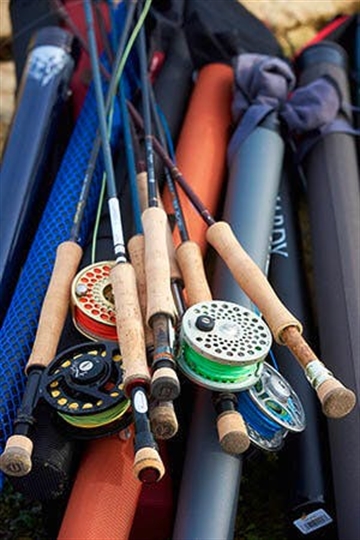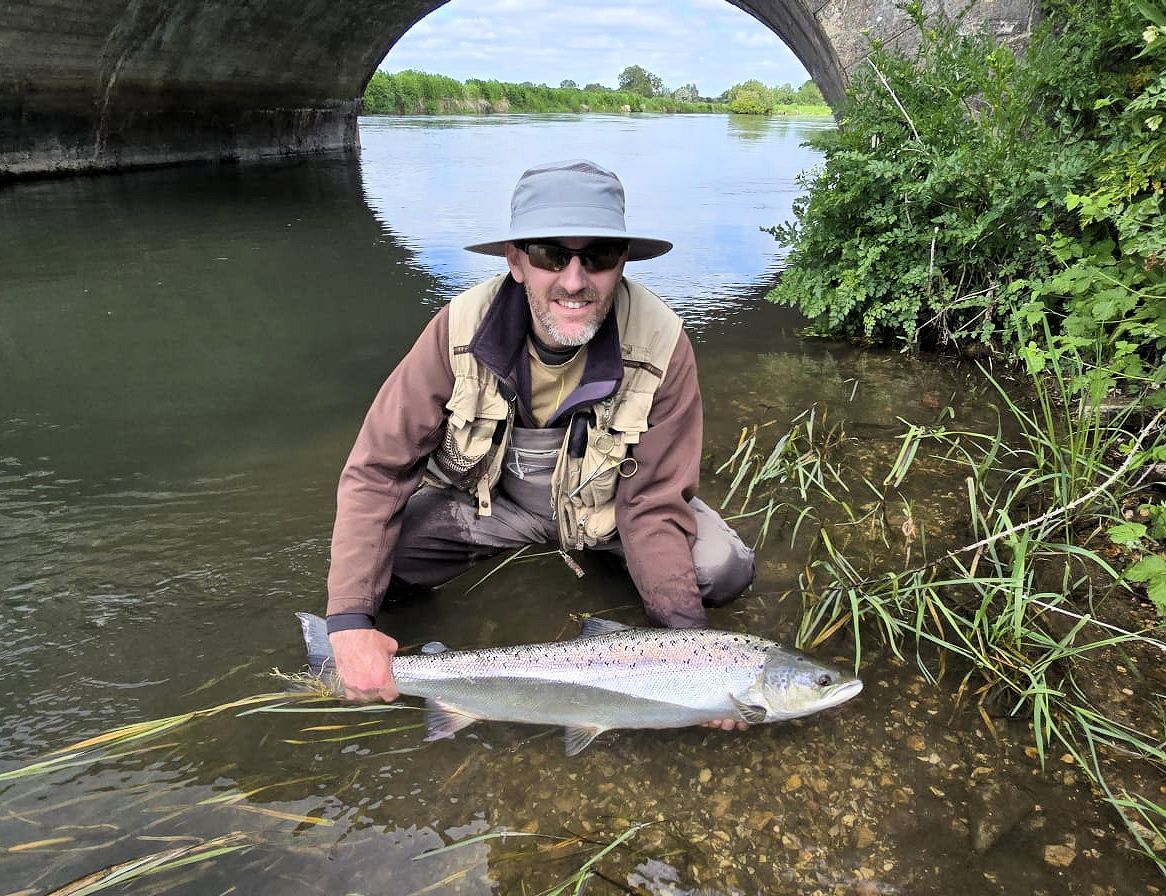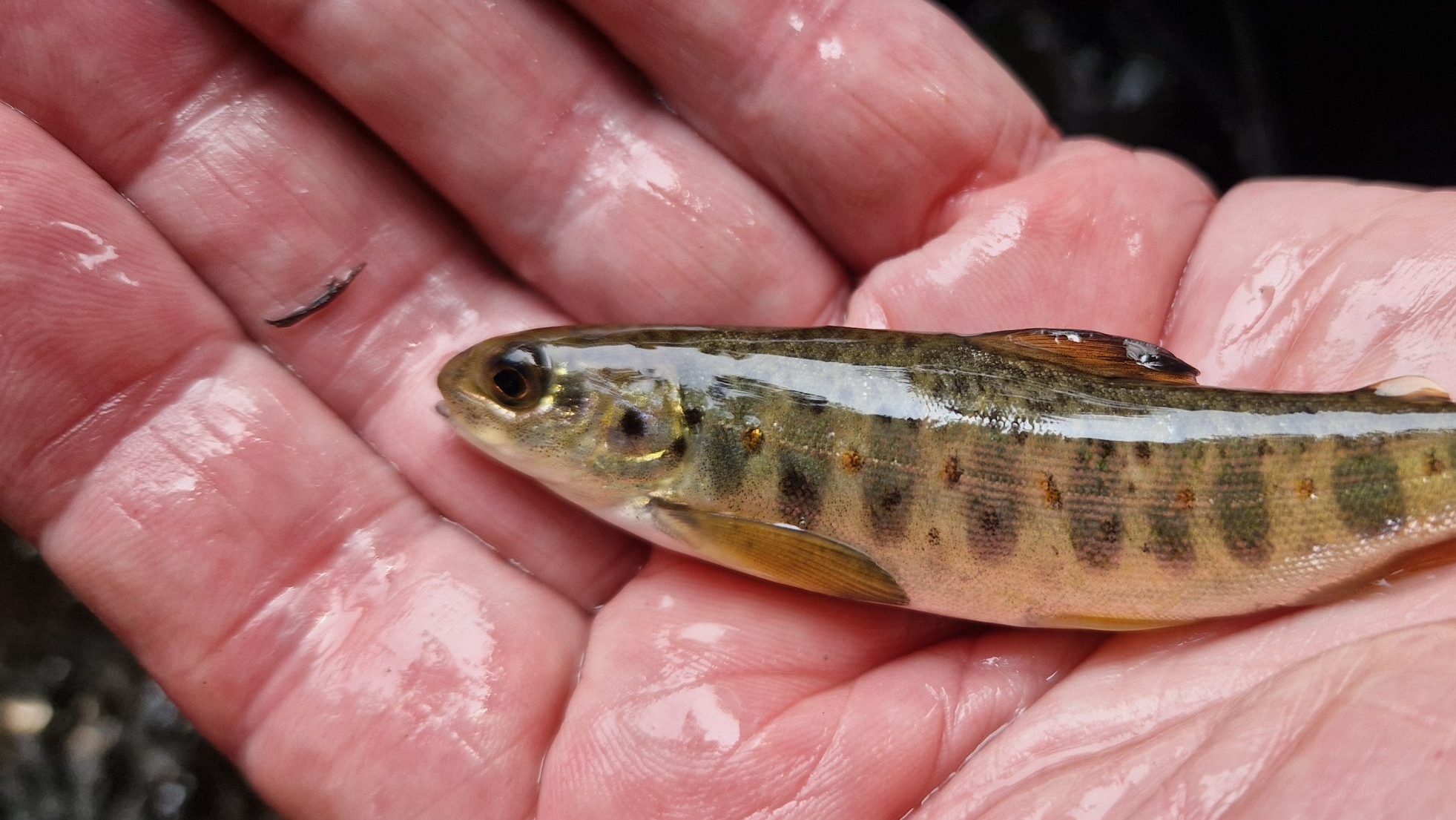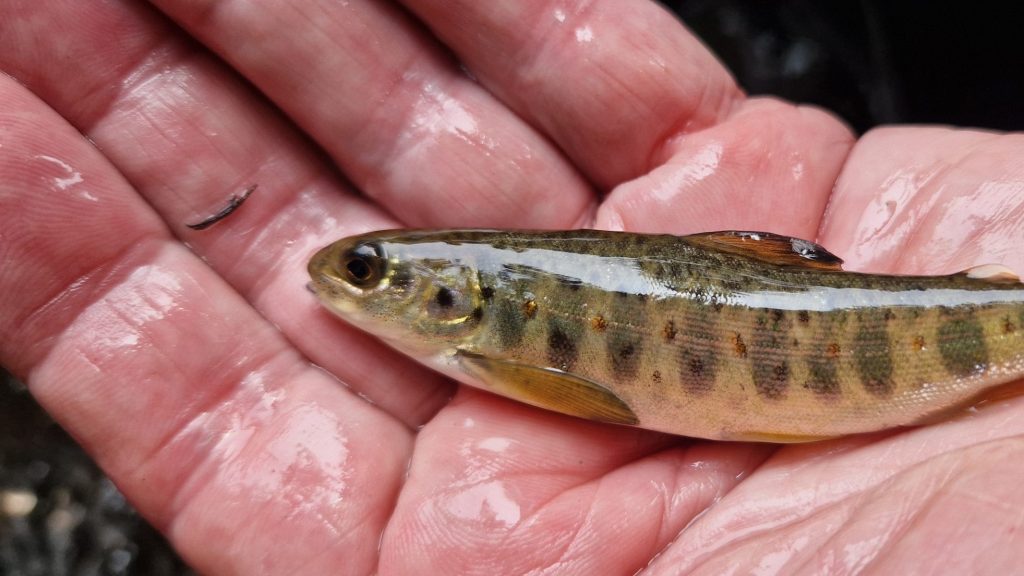FLY FISHING GEAR | 11 10FT SEVEN-WEIGHTS TESTED

The 10ft seven-weight is the most popular size of rod for anglers who fish big stillwaters. It can be used off the bank or on the boat.
Its length makes it ideal for loch-style drifts and hanging flies. Ideally, it will have the backbone to fight powerful grown-on trout and haul deep-sinking lines with lures. A rod with all-round capability will also be able to deliver dry-flies and nymphs quickly and accurately to moving fish. From short-lining with teams of three or four wet-flies to punching out long laser-like casts, much is expected of this versatile tool.
As you become a more discerning fisher, or simply one who prefers a particular style of fishing, you can select rods to perform a specific task, eg dry-fly. In this test, however, we were seeking all-rounders, but we have highlighted each rod’s particular strengths.
We tested 11 of the latest four-piece models from leading manufacturers. Our testers were the editor Andrew Flitcroft, a former England loch-style international, and Peter Gathercole, a reservoir-fishing expert. Each rod was tested with seven-weight floating and Di5 lines.
Sharpe’s Ajax 4
And relax… The Ajax has a through-to-middle action, loading nicely at short distance. It was necessary for Peter to slow his casting action, but once he found the rhythm, he found it a well-balanced rod to cast. It will not deliver ultra-tight loops, but then it is best suited to traditional methods, using teams of flies, where a wider loop is a distinct advantage.
It dealt with the Di5 without collapsing, but this is not a rod for fast-sinking lines. Match it to a floating or intermediate line with a trio of wet-flies and work the bob fly on a short line. You could do this all-day long with the Ajax.

Greys GR60
Stillwater anglers are Greys’ target market. We expected this competitively priced premium seven-weight to be an all-round performer – and we weren’t disappointed. With the floater, it cast a long line, and while not the most delicate of the bunch, it placed short- and medium-range casts with enough precision to show it can cope with finer work.
For boat or bank fishing with a team of flies it will do all that is asked, producing smooth, stable loops, without the need to force the cast. Loaded with the Di5, it could lift and hang the line without feeling like it’s sagging under the weight. If you need one rod to do it all, this is a contender.

Orvis Clearwater
This rod is on the fast side, but with a middle-to-tip rather than a tip action. It was able to cast a full fly-line in the test’s calm conditions; therefore covering fish at long distance is not a problem. Loops were tight and stable with both floating and sinking lines. With the floater, it was accurate but lacked the finesse of some of the other rods at short and medium range. It coped with the sinking line very well and had the steel to lift and hang the Di5. The handle is slim and comfortable.

Wychwood RS Comp
This fast-action tool was very much at home casting the Di5 sinking line, and it could throw it a long way. The very powerful blank had no problem lifting or hanging the heavy line and could deal with large or weighted flies, too. It took a little work to get it to load, and there was the hint of bounce when delivering the forward cast.
It was less at home with a floating line and smaller flies, lacking stability in the tip, and therefore the precision necessary to deliver dry-flies quickly at short range.

Vision Stifu
This rod feels light and lively in the hand and was precise and accurate with the floating line at medium and short range. It has a balanced feel, loading with little effort and accommodating the testers’ different casting strokes. We liked its modern looks: the skeletal reel seat and smoky-blue blank. The rod tested and pictured is a final sample, but with no graphics.
The handle was slimmer and shorter than those of the other rods, suiting a smaller hand but allowing the caster to feel the blank loading. Its rather delicate feel meant that although it coped with the Di5, it felt less comfortable than with the floating line, which suggested it might struggle in adverse conditions.

Guideline LPXe V3
The LPXe series has been around for many years; it’s something of a modern classic. Guideline has now updated the materials and design, improving the blank’s strength and recovery rate. The action is fast and crisp, but feels light in the hand. Loops were tight and stable and both our testers could put out a full line in the calm conditions.
At shorter range, the tip was very responsive and accurate and it would be a joy to use to cover rising fish. With the extra weight of the fast-sinking line, it was a little less stable. It still had the backbone to cast and fish the Di5 but not quite as comfortably as some other rods in the test.

Snowbee Prestige G-XS
Snowbee’s new graphene blank is light and has a very precise, crisp action. You could be forgiven for thinking you were fishing with a six-weight, such is its light, delicate feel with a floating line at short and medium range. Both testers felt it would be perfect for delivering dry-flies or nymphs to cruising fish, but when we tied on a larger fly and started bending the rod into the butt, it also loaded nicely and delivered with substantial power; we caught several end-of-season rainbows on it, casting a floating line and a Snake fly from the bank.
For a light, responsive rod, it dealt with the Di5 surprisingly well and proved it is definitely an all-rounder when required. Being very picky, we felt the stripping rings were on the large side for a seven-weight.

Cortland Competition MkII
As its name implies, this rod has been developed by the Cortland Pro Team with competition fishing in mind, so you would expect it to deal with a variety of lines and techniques. The blank was not the fastest in this test – we’d say it has a middle-to-tip action – but the middle section has sufficient power for the rod to be responsive even under the extra load of the Di5 line, which it dealt with easily. Distance performance was good, while fishing with teams of files is its bread and butter.
Achieving a delicate presentation at shorter range was less natural, but not impossible with a little feathering of the cast. The full-wells handle felt fatter than some others. Like the non-flashy, subtle aesthetics, this rod just does a good job, without dramatics. The best Cortland rods we’ve ever tested.

MacKenzie FX 1
This rod suited Andrew’s casting style right off the bat, but Peter needed to be slightly more deliberate with his timing to get the best from it. While the rod was light and well balanced, the action was a little slower than perhaps we expected from a rod with high-end graphene technology. However, the loops were precise and we were able to deliver long casts.
Closer in, accuracy was good and the tip was stable – delivering delicate casts to rising fish would be a pleasure. Given its lightness in the hand, we thought that the Di5 might be too much for it, but this rod has strength and once you start to bend it deeper, you discover its steely core.

Sage Igniter
A true fast-action rod, the Igniter has huge power and launched floating and sinking lines long distances. It suited Peter’s snappier casting action more than Andrew’s more relaxed stroke. When casting the Di5, we could feel the rod loading nicely; however, it was a little vague with the floating line, which suggested that it might respond better to a heavier line.
When changing direction at medium and short range it felt slightly heavier in the tip than some other rods. Lifting line was not a problem, but a high delivery was needed to achieve a delicate presentation. It was at its best when made to bend on the back cast, followed by a smooth forward delivery, feathering the line down. Any attempt to push the forward cast resulted in the line overrunning itself and a poor turnover. Timing was critical.

Hardy HBX
Hardy has created a very powerful seven-weight rod. Made with the firm’s Sintrix 440 technology, the HBX lifted and cast the Di5 line as well as any rod in the test with plenty of power in the middle sections. The tip is very stable, developing tight loops, and we were able to cast long distances when needed. When we switched to the floating line it delivered pin-point precision at short and medium range, showing that it was just as at home casting dry-flies, as lures or teams of flies.
Like driving a supercar, the power of the rod needs a little managing, and responds best to good timing and a smooth delivery. Try to push it too hard and you will crash and burn; less is more. Let it do the work and it will deliver.






